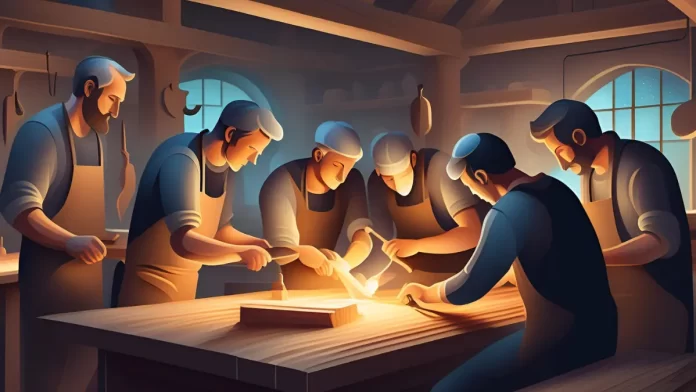In today’s fast-paced and innovation-driven market, the ability to quickly and effectively develop prototypes can determine the success of a new product. Prototypes serve as a tangible representation of an idea, enabling teams to gather feedback, make improvements, and ensure the final product meets user needs and expectations.
It allows designers and engineers to explore design solutions, identify potential issues, and refine their concepts. By understanding the prototyping process, businesses can streamline development, reduce costs, and bring higher-quality products to market faster.
This article delves into the world of prototypes, explaining what they are, their importance in various industries, and the steps involved in taking a concept from an initial idea to a tangible creation.
Table of Content:
Table of Content

The Crucial Role of Prototypes in Design Thinking
Prototypes play a crucial role in the design thinking process, allowing you to bring ideas into the real world, test them, and identify design flaws for necessary adjustments. They enable visualization and experience of concepts, providing valuable insights and feedback.
One key benefit is enhancing communication and collaboration among team members, stakeholders, and investors by presenting a tangible representation of the design. Prototypes help stakeholders make informed decisions about product development, understanding usability, functionality, and overall user experience for accurate feedback and refinements.
Additionally, prototypes foster experimentation and innovation, encouraging the exploration of new ideas and solutions. This iterative process promotes continual improvement and creativity. Prototypes are indispensable tools in design thinking, facilitating collaboration, decision-making, and innovation. Embrace their power to unlock your design potential.
Exploring the Types of Prototypes

When it comes to product development, prototypes play a vital role in bringing ideas to life and ensuring that the final product meets the needs of the target audience. There are various types of prototypes that designers can create, each serving a unique purpose in the development process.
- Sketches and Diagrams: Low-fidelity, hand-drawn visuals for brainstorming and early concept communication.
- Physical Models: Tangible representations to assess shape, size, and materials, often used in architecture and manufacturing.
- 3D Printing and Rapid Modeling: Advanced technology for creating realistic prototypes quickly, enabling rapid iteration and testing.
- Wireframes: Simple, black-and-white layouts used in web and app development to test usability and navigation.
- Virtual or Augmented Reality (VR/AR): Digital environments that allow users to interact with a product, useful for testing user experience.
- Feasibility Models: Proof-of-concept prototypes to evaluate the technical feasibility of critical components or systems.
- Working Models: Functional prototypes that closely resemble the final product, used for testing functionality, ergonomics, and aesthetics.
- Video Prototypes: Videos that simulate user experience, useful for demonstrating complex interactions or user flows.
- Horizontal Prototypes: Focus on testing specific features across different areas of a product.
- Vertical Prototypes: Simulate the end-to-end functionality, showcasing the full range of features.
Having a comprehensive understanding of the different types of prototypes available allows designers to choose the most appropriate method for their specific needs. By leveraging the power of prototypes, designers can gather valuable feedback, identify potential issues, and ultimately create a product that meets the expectations of their target audience.
Prototyping in Various Domains
Prototyping is widely used across various industries, including IT, manufacturing, healthcare, architecture, consumer goods, and transportation.
In IT and software development, prototypes help test and refine applications, improving functionality and user experience before final development. The manufacturing industry uses prototypes to visualize and optimize product design, saving time and resources by identifying flaws early.
In healthcare, prototypes allow for the evaluation and refinement of medical devices, ensuring safety and effectiveness. Architects use them to visualize and validate designs, optimizing space and construction processes.
Consumer goods industries leverage prototypes to gather user feedback and refine products, ensuring market fit. In transportation, prototypes assist in designing and testing new vehicle models for performance and safety.
Prototyping is essential for validating ideas, gathering feedback, and meeting user expectations. It mitigates risks, optimizes resources, and fosters innovation. As technology advances, the efficiency and accessibility of prototyping continue to improve.
Tools and Technologies for Effective Prototyping
Having the right tools and technologies is crucial for effective prototyping, whether for simple or complex projects. Cutting-edge tools enable rapid prototyping and accelerate development, ensuring prototypes are accurate, functional, and aligned with your vision.
Traditional sketching, using pen and paper or digital tools, allows for quick visualization and iteration of ideas. Physical modelling with materials like clay or foam provides a tangible way to assess form, ergonomics, and aesthetics.
Advanced technologies like 3D printing and virtual reality (VR) offer exciting possibilities. 3D printing creates precise physical prototypes from digital models, while VR immerses users in a virtual environment to interact with digital prototypes realistically, ideal for testing user experiences.
Rapid prototyping tools streamline the process, offering pre-designed components and templates to focus on refining ideas. Selecting the right tools based on project requirements, detail level, functionality, and budget enhances your prototyping capabilities, bringing ideas to life efficiently and effectively.
Navigating Between Proof of Concept and Prototype
Navigating between a proof of concept and a prototype in the early stages of product development is crucial. Though similar, they serve different purposes.
A proof of concept (PoC) validates the feasibility of an idea, demonstrating that it can work. It’s a basic, simplified version focusing on core functionality.
A prototype, on the other hand, is a more refined version, testing functionality and gathering user feedback. It helps identify design flaws and improve the user experience.
Choose a PoC if you’re in the ideation phase needing to validate your concept. Opt for a prototype if you have a clearer vision and want to refine and test the product’s functionality. Consider your goals and resources: a PoC is quick and cost-effective, while a prototype provides detailed feedback and refinement.
Both tools are essential. Understanding their distinctions and aligning them with your needs and resources will drive your project to success.
Best Practices in Prototyping
Successful prototype development requires the diligent application of best practices and key strategies. By following these guidelines, designers can enhance the effectiveness and efficiency of their prototyping process. Additionally, becoming aware of common pitfalls in prototyping and learning how to avoid them is crucial for maximizing the chances of creating a successful prototype.
One of the first steps in prototyping is setting clear goals and objectives for the prototype. Clearly defining what the prototype seeks to achieve and its intended functionalities helps guide the design process and ensures that the resulting prototype aligns with expectations.
Furthermore, involving stakeholders and users throughout the prototyping process is essential. By including their input and feedback from the early stages, you can gather valuable insights and ensure that the final prototype meets their needs and expectations. This collaborative approach fosters a sense of ownership and increases the chances of a successful outcome.
Conclusion
In today’s fast-paced market, the ability to quickly develop prototypes is crucial for product success. Prototypes allow teams to gather feedback, make improvements, and ensure the final product meets user needs. This article explored the importance of prototypes, their roles in various industries, and the steps from concept to creation.
For businesses looking to streamline their development process and bring high-quality products to market faster, HashMicro as one of the best ERP software offers powerful tools and features to support effective prototyping.
HashMicro ERP software provides comprehensive solutions to support your prototyping needs, from early sketches to advanced 3D models. See how our software can enhance your design process by trying a free demo today.





















































